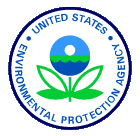EPA Nanotechnology White Paper
 Washinton D.C., USA – The US Environmental Protection Agency has issued its Nanotechnology White Paper. The stated purpose of the report is to inform on science issues and needs associated with nanotechnology, to support related EPA program office needs, and to communicate these nanotechnology science issues to stakeholders and the public.
Washinton D.C., USA – The US Environmental Protection Agency has issued its Nanotechnology White Paper. The stated purpose of the report is to inform on science issues and needs associated with nanotechnology, to support related EPA program office needs, and to communicate these nanotechnology science issues to stakeholders and the public.
Nanotechnology is the understanding and control of matter at dimensions of roughly 1 to 100 nanometers, where unique phenomena enable novel applications. Encompassing nanoscale science, engineering and technology, nanotechnology involves imaging, measuring, modeling and manipulating matter at this scale.
At the nanoscale, the physical, chemical and biological properties of materials may differ in fundamental and potentially valuable ways from the properties of individual atoms and molecules or bulk matter. Nanotechnology presents new opportunities to improve how we measure, monitor, manage and minimize contaminants in the environment. New generations of nanomaterials will evolve and with them new and possibly unforeseen environmental issues.
Environmental applications for nanotechnology are numerous: water and wastewater treatment, renewable energy, efficient building materials, remediation technologies, environmental sensors, and many others. Using nanomaterials in applications that advance in applications that advance green chemistry and engineering and lead to the development of environmental sensors and remediation technologies may provide new tools for preventing, identifying, and solving environmental problems.
Nanotechnology has the potential to contribute to the viability of water resources, such as through advanuse, recycling, and desalinization. For example, nanotechnology-based flow-through capacitors have been designed that desalinize seawater using one-tenth of the energy of state-of-the-art reverse osmosis and one-hundredth the energy of distillation systems.
There is potential for nanotechnology to contribute to reductions in energy demand through lighter materials for vehicles, materials and geometries that contribute to more effect temperature control, technologies that improve manufacturing process efficiency, materials that increase the efficiency of electrical components and transmission lines, and materials that could contribute to a new generation of fuel cells and a potential hydrogen economy. However, because the manufacture of nano-materials can be energy-intensive, it is important to consider the entire product lifecycle in developing and analyzing these technologies.
Other nanotechnology applications in energy include solid-state lighting, and a new type of highly efficient photovoltaic cell that consists of quantum dots connected by carbon nanotubes.
However, as the EPA paper notes, rapid development of nanotechnology and the increasing production of nano-materials and nano–products presents both opportunities and challenges. At this early juncture in nanotechnology’s development, there is an opportunity to develop approaches that will allow production, use, recycling, and eventually disposal of nano-materials in ways that protect human health and safeguard the natural environment.
The Nanotechnology White Paper provides:
- A basic description of nanotechnology
- Potential environmental benefits of nanotechnology
- Risk assessment issues specific to nanotechnology
- A discussion of responsible development of nanotechnology
- An extensive review of research needs for both environmental applications and implications of nanotechnology
- Recommendations for addressing science issues and research needs, and prioritized research needs within most risk assessment topic areas (e.g., human health effects research, fate and transport research)
- A description of EPA’s framework for nanotechnology research
Read the white paper here.
Source: Environmental Protection Agency - US.
You can return to the main Market News page, or press the Back button on your browser.

